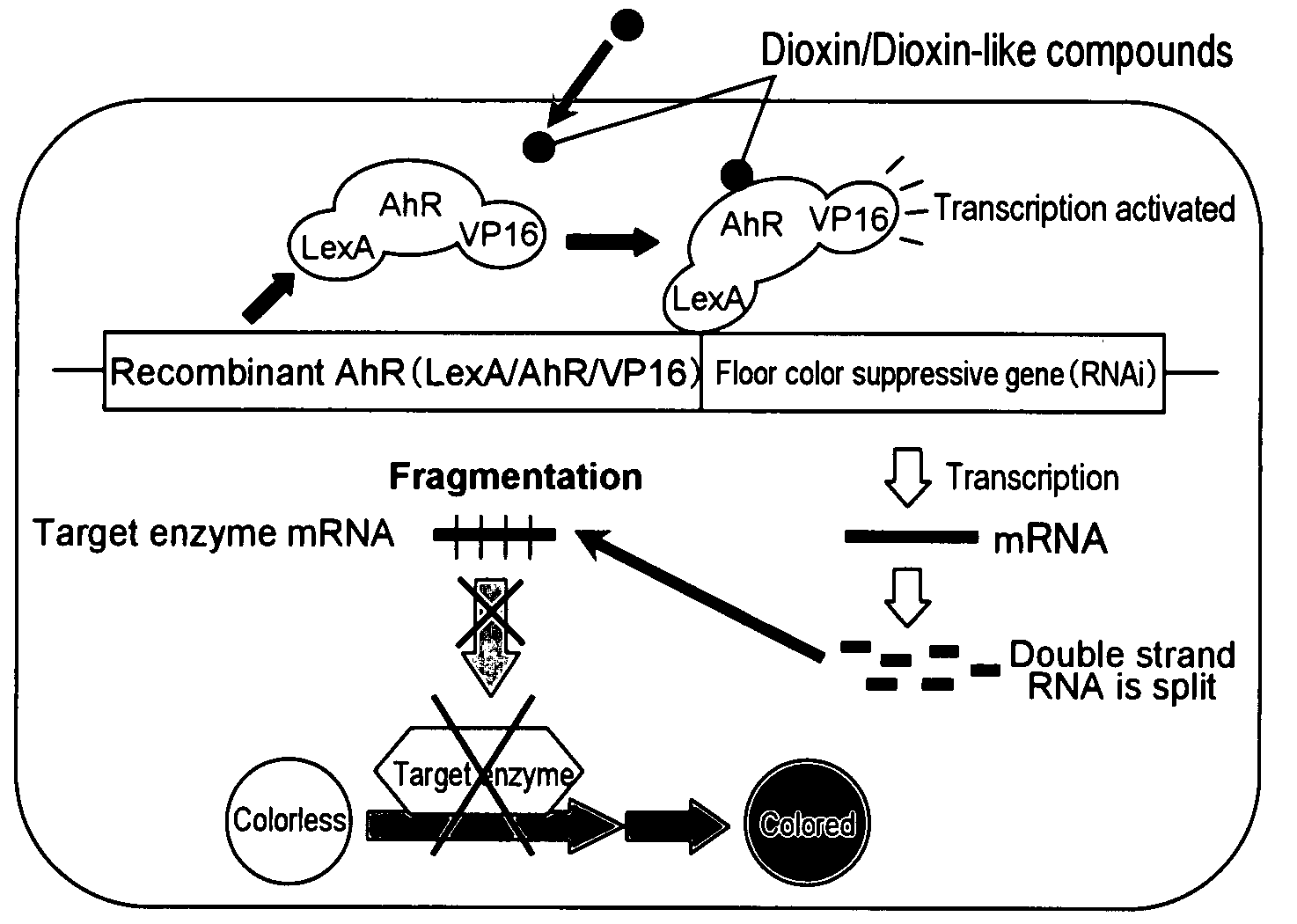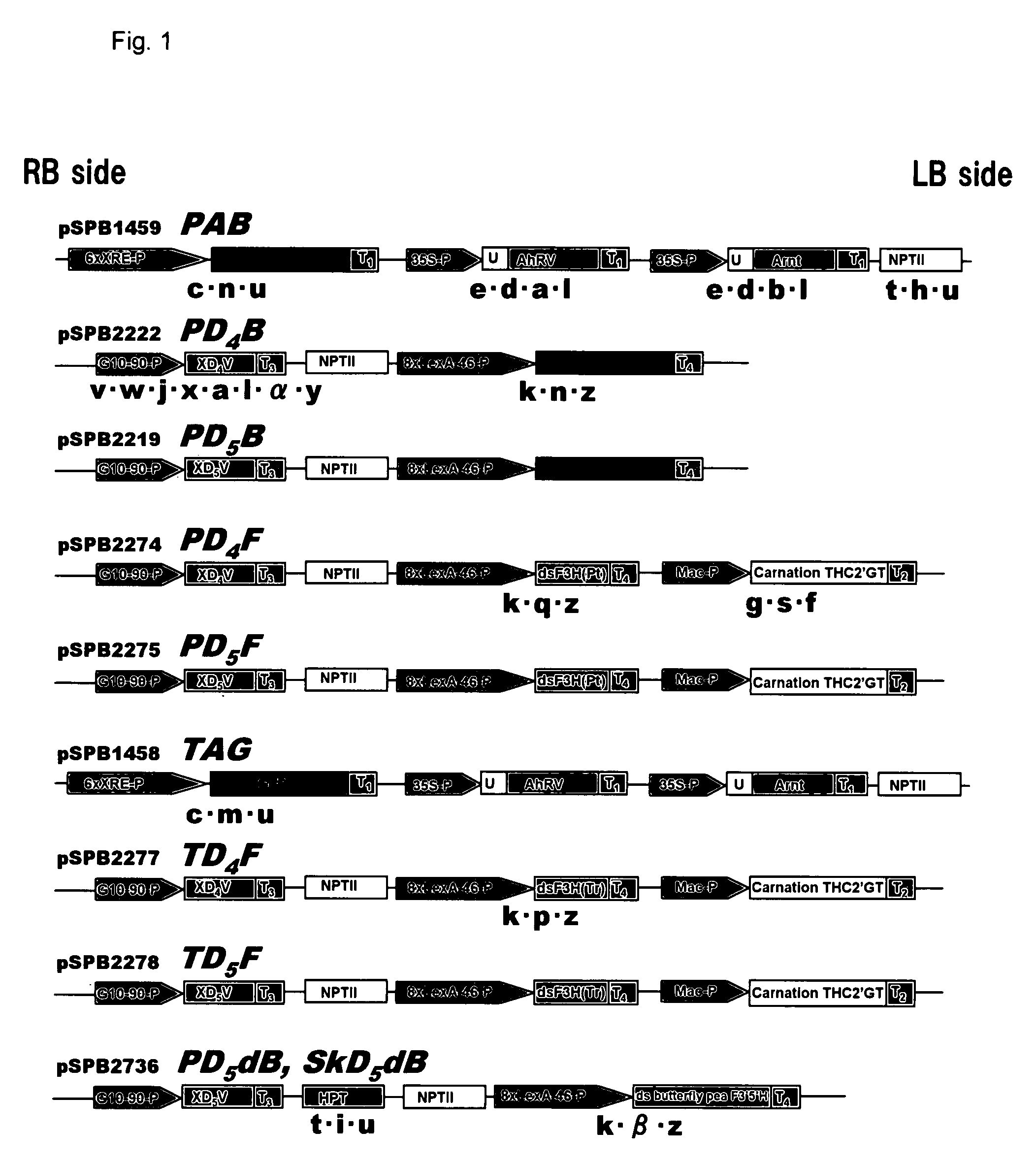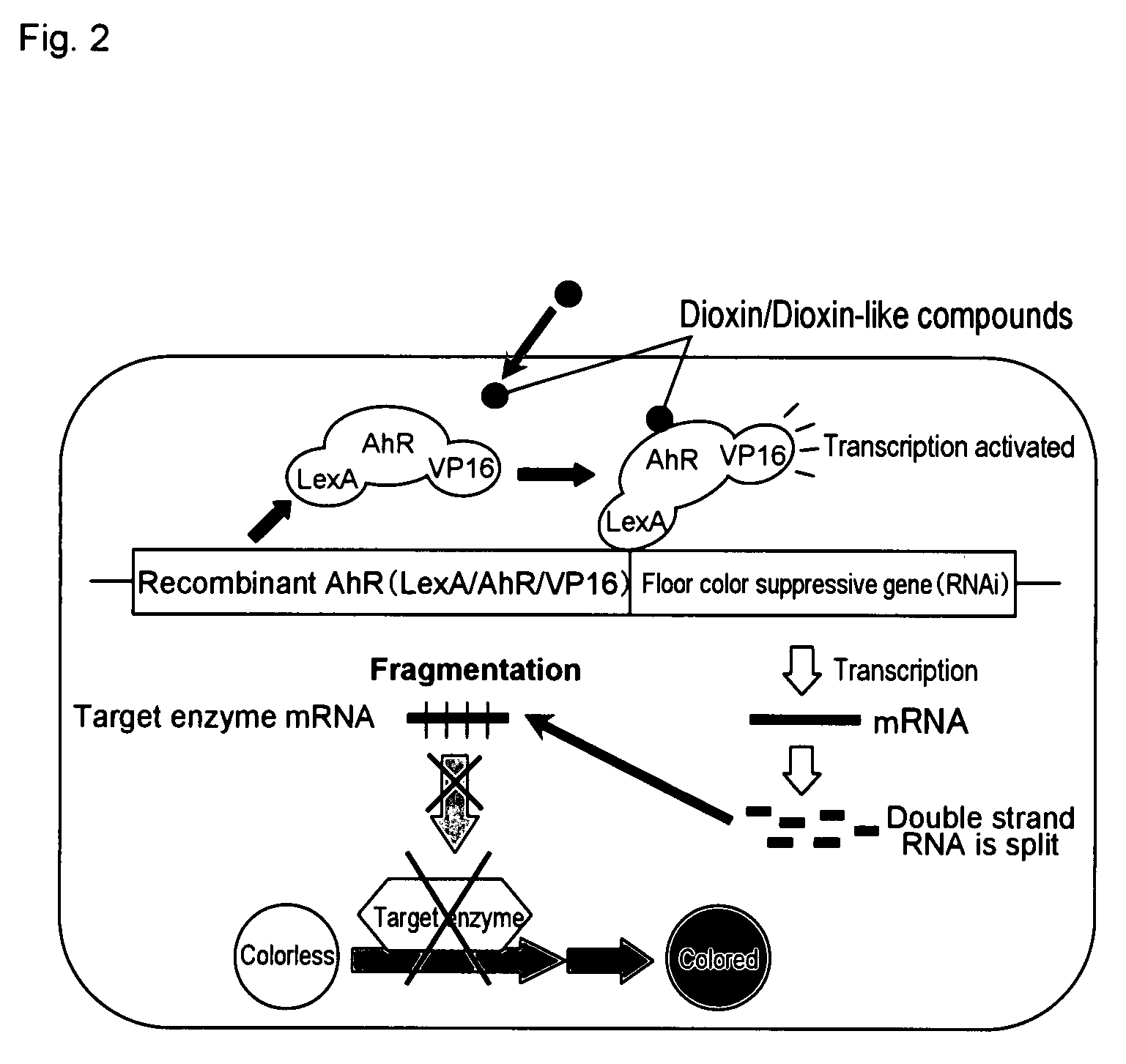Transgenic Plant for Detecting Environmental Chemicals
a technology of environmental chemicals and plants, applied in the field of plant transformation vectors, can solve the problems of high sensitivity and precision of analysis using instruments, adverse effects of hydrocarbons on the environment, adverse effects on the ecosystem as well as the human health, etc., and achieve the effects of not imposing much load on the environment, high sensitivity and precision, and simple structur
- Summary
- Abstract
- Description
- Claims
- Application Information
AI Technical Summary
Benefits of technology
Problems solved by technology
Method used
Image
Examples
reference example 1
Construction of Construct for PAB, PD4B, PD5B and TAG
Construction of Construct for PAB
[0061]To binary vector pBinPlus (Trangenic Research 4, 288-290 (1995)) of pSPB748 (Plant Cell Physiol. 44, s122, 2003), El235S promoter sequence having an enhancer sequence repeated twice in a region upstream with respect to cauliflower mosaic virus 35S promoter (Plant Cell Physiol. 37, 49-59 (1996)), butterfly pea F3′5′H cDNA sequence (described in WO2004 / 020637) and nopaline synthase (nos) terminator sequence had been introduced. From pSPB748, a DNA fragment (about 2.0 kb) having butterfly pea F3′5′H cDNA and nos terminator linked to each other was recovered by BamHI digestion and EcoRI partial digestion and introduced into the BamHI / EcoRI site of pBluescriptII (sk-) (Stratagene). Thus, plasmid pB-Bn was obtained. To pBluescriptII (ks+) (Stratagene) of pBlueSXXREGUS, 6×XRE promoter sequence having mouse xenobiotic responsive element (XRE) repeated 6 times, GUS gene, and nos terminator had been in...
reference example 2
Induction Experiment of PAB PD4B PD5B and TAG by Dioxin or Dioxin-Like Compound
[0065]An induction experiment of cultivating transgenic plants in the medium and soil containing dioxin or a dioxin-like compound to check whether or not a target gene (in this case, F3′5′H gene or GFP gene) was expressed to change the flower color was performed in two stages: an in vitro induction experiment performed in an agar medium using tissue-cultured seedling for the purpose of selecting high quality lines which can be induced (primary evaluation); and an induction experiment of cultivating in the soil and allowing the plants to flowering to check the change of flower color (secondary evaluation).
Primary Evaluation
[0066]For the primary evaluation, 20-methylcholanthrene (MC) was used as dioxin or a dioxin-like compound. MC is an analog of dioxin or a dioxin-like compound and is known as being bound to an AhR. PAB, PD4B, PD5B and TAG were transplanted to an MS agar medium (Physiol Plant, 15, 473-493...
example 1
Construction of Construct for PD4F, PD5F, TD4F and TD5F
[0070]It is considered that in the attempts to induce the expression of butterfly pea F3′5′H gene in petunia PL with dioxin or a dioxin-like compound as performed in Reference Examples 1 and 2, the flower color did not change because the induction level was too low. Now, it was attempted to specifically suppress the endogenous gene involved in the synthesis of anthocyanin by dioxin or a dioxin-like compound and thus to suppress the synthesis of anthocyanin and thus change the flower color.
[0071]In this example, as the gene in the second transcription structure involved in the synthesis of anthocyanin, flavanone 3-hydroxylase (F3H) was used, and as the gene expression suppressing method, the RNAi method was used. F3H is an enzyme catalyzing the reaction of converting naringenin into dihydrokaempferol. By suppressing the expression of F3H gene, the biosynthesis of flavonoid downstream of dihydrokaempferol is inhibited. Since antho...
PUM
| Property | Measurement | Unit |
|---|---|---|
| color | aaaaa | aaaaa |
| drug resistance | aaaaa | aaaaa |
| concentration | aaaaa | aaaaa |
Abstract
Description
Claims
Application Information
 Login to View More
Login to View More - R&D
- Intellectual Property
- Life Sciences
- Materials
- Tech Scout
- Unparalleled Data Quality
- Higher Quality Content
- 60% Fewer Hallucinations
Browse by: Latest US Patents, China's latest patents, Technical Efficacy Thesaurus, Application Domain, Technology Topic, Popular Technical Reports.
© 2025 PatSnap. All rights reserved.Legal|Privacy policy|Modern Slavery Act Transparency Statement|Sitemap|About US| Contact US: help@patsnap.com



